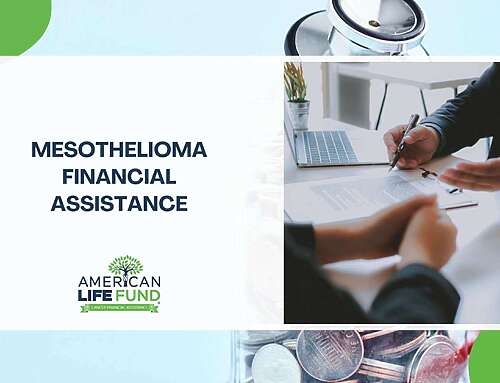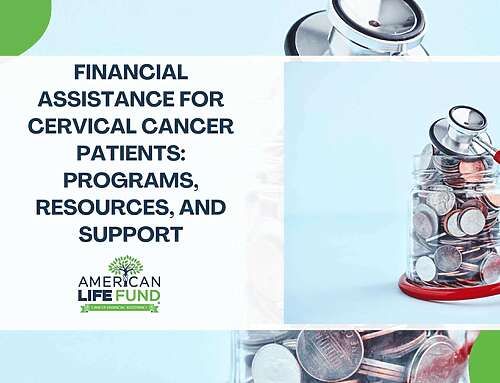Bladder cancer treatment can be expensive, including costs for hospital stays, surgeries, medications, and doctor visits. It’s important to understand these costs and manage them effectively. Check your health insurance details, know which providers are in-network to save money, and look into patient assistance programs for financial help. Budget for all expenses, negotiate your medical bills, and consider viatical settlements, which allow you to sell your life insurance policy for immediate cash.

Key Takeaways
- Understanding Treatment Costs: Treating bladder cancer involves various costs, including radiation, medications, and surgery-related costs. Understanding the financial landscape is crucial for informed decision-making.
- Navigating Insurance Benefits: Thoroughly review your health insurance policy to optimize coverage. Differentiate between in-network and out-of-network providers, and be aware of pre-authorization requirements for treatments.
- Financial Assistance Options: Explore patient assistance programs, co-payment assistance, and disability benefits to alleviate the financial burden. Engage with healthcare providers, financial counselors, and support organizations for guidance.
- Proactive Financial Management: Stay proactive by budgeting for direct and indirect expenses, negotiating medical bills, and seeking assistance from available resources. Taking control of your financial plan empowers you to manage the costs effectively.
Understanding the Cost of Treating Bladder Cancer
Facing bladder cancer involves not only health challenges but also financial considerations. Here’s a breakdown of the associated costs:
Outpatient and Inpatient Costs:
- Dynamics: Outpatient visits (no overnight stay) are generally more cost-effective.
- Insight: Research indicates that outpatient treatments for bladder cancers are often cost-effective.
- Hospital Stays: Inpatient care (hospital stays) tends to be pricier.
Average Total Costs and Disease Impact:
- Comprehensive Consideration: Take into account all costs, not just individual visits.
- Research Findings: Studies suggest that treating advanced bladder cancer is more expensive than treating early-stage cases.
Treatment Costs:
- Radiation Therapy and Chemotherapy: Treatments like radiation and chemotherapy contribute to overall treatment costs.
- Treatment Effectiveness: Radiation therapy is effective in treating locally advanced bladder cancer.
- First-Line Palliative Chemotherapy and New Therapies:
- Initial Approach: Initial palliative chemotherapy is common for metastatic cases, affecting overall costs.
- Cost Consideration for New Therapies: Emerging treatments may come with higher price tags.
Considering Extra Costs and Teamwork:
- Beyond Medical Bills: Acknowledge additional costs like lost work time when considering the overall financial impact.
- Multidisciplinary Collaboration: Working with a team of specialists may incur extra costs but is vital for comprehensive care.
Understanding the financial aspects of bladder cancer treatment empowers you to make informed choices. Consider these aspects as you navigate the next sections, exploring costs related to different stages of bladder cancer, prognosis, and the evolving landscape of medical care.

Stages of Bladder Cancer Diagnosis and Their Impact on Costs
Bladder cancer presents itself in various stages, each carrying distinct implications for treatment approaches and associated costs. Gaining insight into these stages is pivotal for patients and their families, as it directly shapes the financial landscape of bladder cancer treatment.
Stage I and II Bladder Cancer
The bladder tumor is localized in the early stages (I and II) of bladder cancer. It has not spread to nearby tissues. Treatment often involves surgery to remove the tumor, and the associated costs are comparatively lower. Regular monitoring and follow-up appointments may be recommended, contributing to outpatient visit expenses. While the financial impact is notable, the overall costs are generally more manageable at this stage.
Stage III Bladder Cancer
At Stage III, bladder cancer typically advances, spreading to nearby tissues or structures. The treatment plan may involve a combination of surgery, radiation, and possibly chemotherapy. As the complexity of treatment increases, so does the health care costs. Inpatient cancer care costs may rise, reflecting the need for hospital stays during more intricate procedures or prolonged treatments.
Stage IV Bladder Cancer (Metastatic)
In Stage IV, bladder cancer becomes metastatic, spreading to distant organs or tissues. This advanced stage often requires comprehensive and prolonged treatment strategies, including systemic therapies such as chemotherapy or targeted therapies. The associated health care costs significantly escalate due to the need for more extensive medical interventions, frequent doctor visits, and ongoing monitoring. Metastatic bladder cancer may pose considerable financial challenges for patients and their families.

Factors Influencing Costs Across Stages
Several factors contribute to the overall economic impact of treating bladder cancer across all stages:
- Treatment Modalities: The choice of treatments, including surgery, radiation, and chemotherapy, significantly influences costs.
- Disease Progression: The extent to which bladder cancer has progressed affects the complexity of treatment and, consequently, the associated expenses.
- Follow-Up Care: Regular follow-up visits, imaging tests, and surveillance contribute to outpatient visit costs.
- Insurance Coverage: The type and extent of insurance coverage play a vital role in mitigating or exacerbating financial burdens.
Understanding these distinct stages and their corresponding financial considerations is essential for patients and their support networks. It empowers individuals to make informed decisions, plan for potential expenses, and explore available resources to manage the financial aspects of their bladder cancer journey.

Insurance Coverage and Its Role in Treatment Costs
Insurance coverage’s role in managing bladder cancer treatment costs is crucial for patients seeking financial support during their medical journey. In this section, we discuss the impact of insurance on the economic aspects of sarcoma cancer treatment, focusing on key factors that can significantly influence the financial burden.
Importance of Insurance in Bladder Cancer
Having insurance coverage is instrumental in easing the financial strain associated with bladder cancer treatment. Adequate insurance can be a crucial safety net, covering various medical expenses and ensuring patients can access necessary treatments without shouldering the entire financial burden.
Types of Insurance Plans
The type of insurance plan a patient holds plays a significant role in determining the extent of coverage for bladder cancer treatment costs. Common types of insurance include:
- Private Health Insurance: Many individuals have private health insurance plans through employers or independently purchased policies. These plans vary widely in coverage, co-payments, and deductibles.
- Medicare: Available for individuals aged 65 and older, as well as certain younger individuals with disabilities, Medicare can provide coverage for hospital stays, outpatient services, and some prescription drugs.
- Medicaid: Aimed at low-income individuals, Medicaid offers coverage for medical services, including those associated with bladder cancer treatment.
Key Factors Influencing Coverage
Several factors impact the effectiveness of insurance coverage for bladder cancer:
- Policy Limits: Some insurance policies may limit specific treatments or procedures, potentially affecting coverage for comprehensive and advanced treatment options.
- In-Network vs. Out-of-Network Providers: Insurance plans often distinguish between in-network and out-of-network healthcare providers. Patients who visit in-network providers typically have lower out-of-pocket costs.
- Pre-Authorization Requirements: Certain treatments may require pre-authorization from insurance providers. Failure to obtain authorization could lead to higher out-of-pocket costs for patients.
- Prescription Drug Coverage: Understanding the extent of prescription drug coverage is vital, as it directly affects the out-of-pocket costs for medications prescribed during bladder cancer treatment.
Navigating the Insurance Landscape
Patients and their families are encouraged to engage with their insurance providers to proactively:
- Understand Coverage Details: Familiarize themselves with the specific details of their insurance coverage, including deductibles, co-payments, and limitations.
- Verify In-Network Providers: Confirm the list of in-network healthcare providers to optimize coverage and minimize out-of-pocket expenses.
- Seek Assistance: Explore available resources, such as patient assistance programs or financial counselors, to navigate potential financial challenges.
By being informed and actively participating in discussions with insurance providers, patients can better manage the financial aspects of treating bladder cancer. This proactive approach empowers individuals to make informed decisions that align with their healthcare needs and financial well-being.

Direct and Indirect Expenses in Bladder Cancer Treatment
Understanding the full spectrum of expenses associated with bladder cancer treatment goes beyond the immediate medical costs.
Direct Expenses
Medical Procedures and Treatments
Direct expenses encompass the tangible and immediate costs of treating bladder cancer. These may include:
- Surgery: Costs associated with surgical procedures to remove the bladder tumor.
- Radiation Therapy: Expenses related to targeted radiation treatments.
- Chemotherapy: Costs of medications and procedures associated with chemotherapy.
- Medications: Out-of-pocket expenses for prescribed medications.
- Doctor Visits: Co-payments and fees for consultations with healthcare professionals.
- Tests and Imaging: Costs related to diagnostic tests and imaging studies.
Inpatient and Outpatient Care
- Hospital Stays: Health care expenditures with inpatient cancer care, including room charges, nursing care, and other services during hospital stays.
- Outpatient Visits: Costs for consultations and treatments received without overnight hospital stays.
Indirect Expenses
Lost Productivity and Income
Beyond direct medical costs, indirect expenses represent the less tangible but impactful financial aspects. These include:
- Lost Work Time: Income lost due to time away from work for medical appointments, treatments, and recovery.
- Reduced Productivity: Decreased work efficiency during and after treatment.
Factors Influencing Direct and Indirect Expenses
Several factors contribute to the overall direct and indirect expenses associated with bladder cancer treatment:
- Treatment Complexity: The complexity of the chosen treatment plan, such as the need for surgery, extensive chemotherapy, or prolonged hospital stays, can significantly impact direct expenses.
- Recovery Period: The duration of the recovery period and its impact on the ability to work can influence direct and indirect expenses.
- Insurance Coverage: The extent of insurance coverage plays a crucial role in determining out-of-pocket costs for direct expenses and may provide relief for indirect expenses through disability benefits.
Navigating Financial Challenges
Understanding the dual nature of direct and indirect expenses empowers patients to manage their financial challenges proactively:
- Budgeting: Planning for direct and indirect expenses improves financial preparedness.
- Communication with Employers: Open communication about the treatment plan and potential time away from work can facilitate understanding and support.
- Exploring Support Resources: Seeking assistance from financial counselors, patient advocacy groups, or social workers can provide valuable insights and potential resources to alleviate financial burdens.
By addressing direct and indirect expenses, patients can better navigate the financial aspects of bladder cancer treatment, fostering a more informed and financially resilient approach to their healthcare journey.
Financial Assistance Options for Bladder Cancer Patients
Understanding that the financial burdens of bladder cancer treatment can be challenging, this section explores various avenues of financial assistance available to patients. Navigating medical expenses requires awareness of potential support systems, and we aim to highlight viable options for individuals facing financial challenges during their bladder cancer journey.
Patient Assistance Programs
Numerous pharmaceutical companies and non-profit organizations offer patient assistance programs to alleviate the cost of medications and treatments. These programs often provide financial support, discounts, or even free medications to eligible individuals.
Health Insurance Navigator Services
Engaging with health insurance navigators can be immensely helpful, especially for those facing insurance-related matters. These professionals can guide patients through understanding their insurance coverage, addressing billing concerns, and exploring potential financial aid options.
Co-Payment Assistance Programs
Co-payment assistance programs exist to help patients cover the out-of-pocket costs associated with medical treatments. Pharmaceutical companies, charitable foundations, or advocacy organizations may offer these programs, ensuring individuals can access necessary treatments without shouldering the entire financial burden.
Financial Counseling Services
Many healthcare facilities provide financial counseling services to assist patients in understanding and managing their medical expenses. Financial counselors can offer guidance on negotiating bills, setting up manageable payment plans, and identifying additional resources for financial support.
Disability Benefits
Patients undergoing treating bladder cancer may be eligible for disability benefits, offering financial support during periods of inability to work. Exploring disability benefits through government programs or employer-offered plans can provide much-needed assistance for individuals facing income loss due to treatment-related challenges.
Local and National Charities
Numerous charitable organizations focus on providing financial assistance to cancer patients. Local and national charities may offer grants, financial aid, or services to help cover a range of expenses, including transportation, lodging, and daily living costs.
Social Work Services
Hospital-based social workers are valuable resources for connecting patients with various forms of assistance. Social workers can assist in identifying available resources, applying for financial aid programs, and offering emotional support throughout the financial challenges associated with cancer treatment.

Tips for Managing Bladder Cancer Treatment Costs
The financial challenges of bladder cancer treatment require strategic planning and proactive management. Here are a few tips to consider:
Open Communication with Healthcare Providers
Establish transparent communication with healthcare providers regarding treatment costs. Discussing potential financial concerns allows for collaborative decision-making and exploring cost-effective treatment options.
Understand Insurance Coverage Thoroughly
Comprehensively understand the details of your insurance coverage, including deductibles, co-payments, and policy limitations. Regularly review your plan to stay informed about changes that might affect out-of-pocket expenses.
Explore Generic Medications
Consult with your healthcare team about the availability of generic versions of prescribed medications. Generic drugs often offer a more cost-effective alternative without compromising treatment efficacy.
Utilize Patient Assistance Programs
Investigate and apply for patient assistance programs offered by pharmaceutical companies or charitable organizations. These programs can provide financial relief by covering or reducing the costs of medications and treatments.
Seek Financial Counseling Services
Engage with financial counseling services available at healthcare facilities. These professionals can guide you in managing medical expenses, negotiating bills, and identifying potential sources of financial assistance.
Research Co-Payment Assistance Programs
Explore co-payment assistance programs that specifically target out-of-pocket costs associated with medical treatments. These programs, often provided by pharmaceutical companies, can help mitigate patients’ financial impact.
Plan for Transportation and Lodging Costs
Factor in transportation and lodging costs associated with treatment, especially if medical facilities are located at a distance. Consider seeking assistance from local charities or patient advocacy groups that may provide support for these expenses.
Evaluate Disability Benefits
Investigate disability benefits to address potential income loss during treatment. Government programs and employer-offered disability plans can provide financial support for individuals unable to work due to their medical condition.
Budget and Prioritize Expenses
Create a detailed budget that prioritizes essential expenses. Identifying areas where costs can be minimized allows for better financial planning and allocation of resources during the treatment period.
Engage with Support Organizations
Connect with local and national cancer support organizations. These groups often provide resources, guidance, and financial assistance to individuals undergoing cancer treatment, helping to ease the overall economic burden.

Understand Health Insurance Benefits
Knowing the intricacies of health insurance is critical when facing the financial challenges associated with bladder cancer treatment. Below, we break down essential aspects of health insurance benefits, clarifying how individuals can optimize their coverage to manage the costs of sarcoma cancer treatment.
Review Your Insurance Policy
Take the time to review your health insurance policy thoroughly. Understand the specifics of your coverage, including deductibles, co-payments, and any limitations related to bladder cancer treatment.
In-Network vs. Out-of-Network Providers
Differentiate between in-network and out-of-network healthcare providers. Visiting in-network providers generally results in lower out-of-pocket costs. Confirm that your chosen healthcare professionals and facilities are within your insurance network.
Pre-Authorization Requirements
Be aware of any pre-authorization requirements for specific treatments. Ensuring that necessary authorizations are obtained beforehand can prevent unexpected coverage denials and reduce out-of-pocket expenses.
Understand Policy Limits
Check for any policy limits that may apply to certain treatments or procedures. Knowing the extent of coverage for various aspects of bladder cancer treatment can help you plan and budget effectively.
Prescription Drug Coverage
Examine the details of your policy’s prescription drug coverage. Understand the co-payments or co-insurance associated with prescribed medications and explore options for cost-effective alternatives or generic drugs.
Explore Telemedicine Options
Check if your insurance plan offers telemedicine options. Virtual consultations may provide a convenient and potentially cost-effective way to connect with healthcare professionals, especially for follow-up appointments.
Clarify Coverage for Clinical Trials
If you are considering participating in clinical trials, clarify with your insurance provider whether the associated costs are covered. Some policies may provide coverage for certain trial expenses.
Keep Track of Out-of-Pocket Expenses
Maintain a record of all out-of-pocket expenses related to bladder cancer treatment. This includes co-payments, deductibles, and any additional costs. Organizing this information will aid in monitoring your overall healthcare spending.
Stay Informed about Changes in Coverage
Stay informed about any changes in your insurance coverage. Changes in policy terms, provider networks, or formularies can impact your out-of-pocket costs, so regularly check for updates.
Consult with Health Insurance Navigators
Consider consulting with health insurance navigators for guidance. These professionals can help you understand the intricacies of your coverage, address billing concerns, and explore potential financial aid options.
Viatical Settlements: A Financial Resource for Bladder Cancer Patients
Bladder cancer patients and their families often encounter financial challenges during their treatment. Viatical settlements, like those provided by American Life Fund, offer an alternative financial solution worth considering.
Understanding Viatical Settlements
A viatical settlement involves selling a life insurance policy to a third party for a lump sum payment. This option is usually considered by individuals with life-threatening illnesses, such as bladder cancer, who need immediate access to funds for medical expenses or other financial obligations.
American Life Fund’s Role
American Life Fund specializes in viatical settlements, supporting individuals with serious illnesses, including bladder cancer. Choosing a viatical settlement enables patients to receive a lump sum from their life insurance, easing financial pressures without waiting for traditional life insurance payouts.
Benefits for Bladder Cancer Patients
- Immediate Financial Support: Viatical settlements provide quick access to funds, which is crucial during the demanding times of bladder cancer treatment.
- Versatile Use of Funds: The received lump sum can cover various needs, from medical bills to alternative treatments or enhancing quality of life.
- No Repayment Required: Viatical settlements are not loans, so there’s no need to repay the amount received, allowing patients to use the funds freely.
Considerations Before Choosing a Viatical Settlement
- Effect on Life Insurance: Opting for a viatical settlement alters your life insurance coverage, so it’s important to carefully assess the benefits and potential drawbacks.
- Seeking Professional Advice: To fully understand the implications of a viatical settlement, it is recommended that you consult with financial advisors, healthcare professionals, and legal experts.
Viatical settlements are not a one-size-fits-all solution. However, they can be a valuable financial tool for bladder cancer patients needing prompt financial relief. American Life Fund provides guidance and empathetic support to individuals exploring their financial options during challenging times.
Summary
Facing the financial aspects of bladder cancer treatment requires a strategic approach. Understanding your health insurance benefits, exploring financial assistance options, and proactive management are key.
From navigating the different stages of diagnosis to considering both direct and indirect expenses, we’ve explored comprehensive insights to empower your journey. Patient assistance programs, co-payment assistance, and disability benefits can offer support. Engage with healthcare providers, review insurance policies, and seek guidance from financial counselors.
By implementing these tips, you can navigate the financial landscape with resilience. Remember, you’re not alone—utilize available resources and support to manage bladder cancer treatment costs effectively.

Frequently Asked Questions
Are there specific financial assistance programs tailored to bladder cancer patients?
Yes, numerous patient assistance programs, both from pharmaceutical companies and charitable organizations, offer support for bladder cancer patients. These programs can help cover medication and treatment costs.
How can I find a healthcare provider that aligns with my insurance coverage?
To find in-network healthcare providers, consult your insurance provider’s online directory or customer service. Confirming the network status of healthcare professionals ensures more cost-effective visits.
Can I negotiate medical bills related to bladder cancer treatment?
Yes, you can negotiate medical bills. Engage in open communication with healthcare providers, express your financial concerns, and inquire about possible discounts or flexible payment plans.
What other resources can help me manage indirect expenses during treatment?
Local and national cancer support organizations often provide resources for managing indirect expenses such as transportation, lodging, and daily living costs. Social workers at healthcare facilities can guide you to these resources.
Are there government programs that provide financial assistance for individuals with bladder cancer?
Government programs such as Medicaid may offer financial assistance for low-income individuals. Explore eligibility and application processes through local government offices or online resources.
How can I stay informed about changes in my insurance coverage?
Regularly review updates from your insurance provider, and stay informed about any policy terms or provider network changes. Checking for updates on the insurer’s website or contacting customer service ensures awareness of any modifications.





